Last August, Xiaomi has made official its Redmi Note 4 which is the first smartphone to have MIUI 8 to boot. Along with it come a Helio X20 processor and a 5.5-inch Full HD display encased in a metal unibody. Let’s take a look a closer look at this budget but capable handset in today’s hands-on.

The Redmi Note 4 flaunts a 5.5-inch display which is overlayed with a Full HD resolution panel. It has fairly thin bezels and employs three capacitive buttons namely: Recent Apps, Home, and Back. You’d be glad to know that these are backlit so you wouldn’t have to guess where to press when you’re in the dark.
Up top is the speaker for calls which is flanked by the sensor and the front 5-megapixel camera.
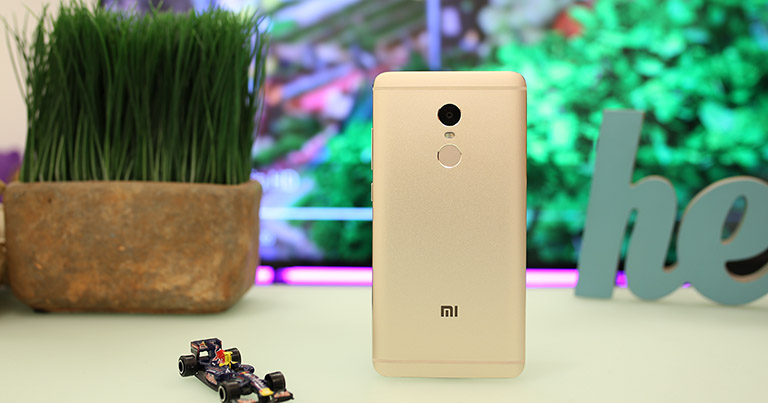
Turn it around and you’ll get acquainted with its metal unibody that feels smooth on the hands while it exudes a visually elegant presence. You’ll notice that the back panel is segmented by two antenna bands which allow for better signal reception. On the lower half is where you’ll see Xiaomi‘s branding.
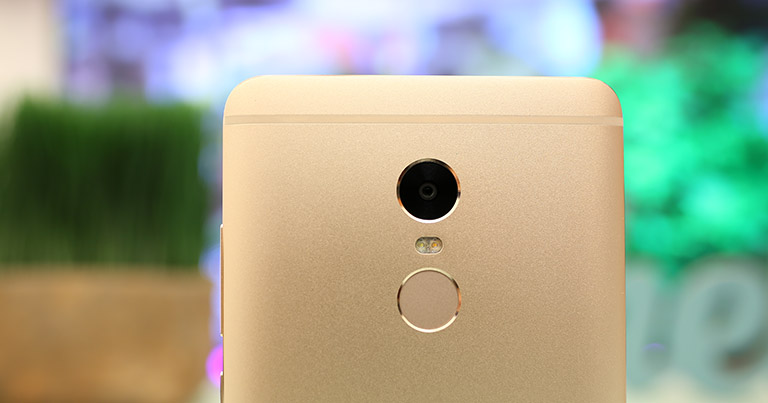
Aligned with the fingerprint scanner is the main 13-megapixel shooter which is armed with an f/2.0 aperture, Phase Detection Autofocus, and is accompanied by dual LED lights. The fingerprint scanner has a shiny outline that positively accentuates the area.
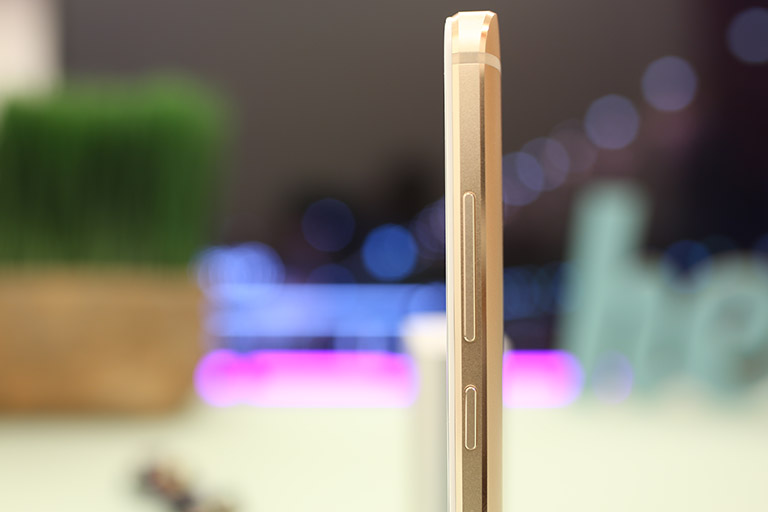
On the right side are the only physical buttons you’ll see on the Redmi Note 4. Here we have the volume rocker above the power/lock button. From this angle, we also see the chamfered edge this handset sports.
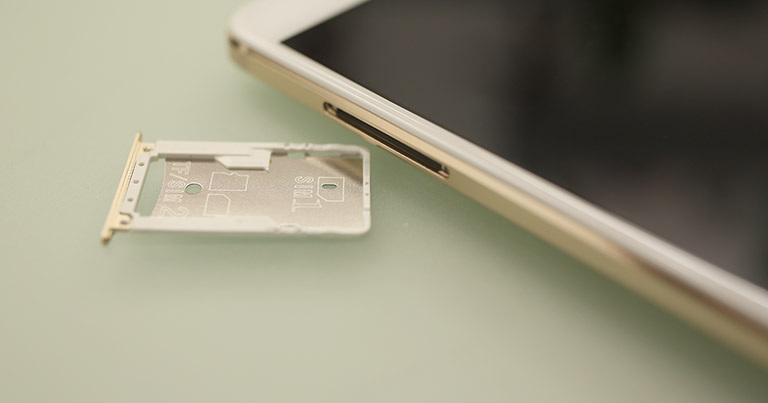
Meanwhile, the opposite side houses the SIM card slots with a hybrid setup. You may choose to use two SIM cards or sacrifice the second slot for additional storage via microSD.
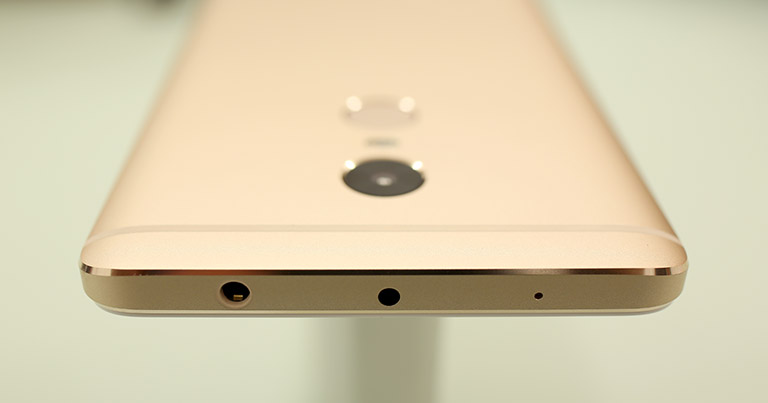
Up top, we have three circles that look like they’re lined up according to size. The biggest one is the 3.5mm audio jack, the middle is an IR blaster for controlling appliances, and the smallest is the pinhole for the microphone.
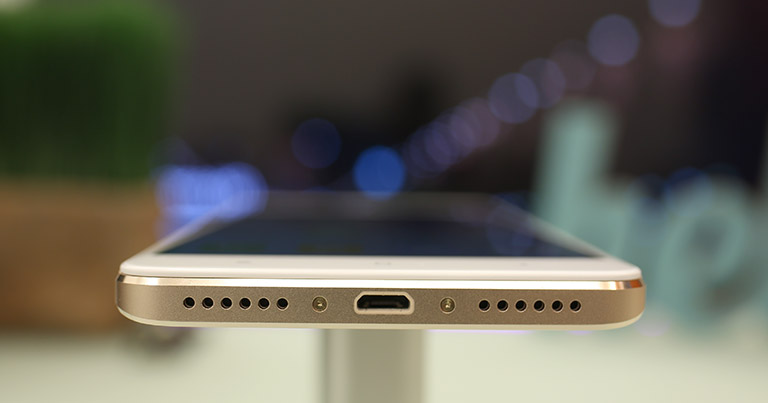
The Redmi Note 4 still rocks a microUSB port situated under it. There are holes on both sides that appear to be speaker grilles but that’s just half the truth since the right side are the only ones that throw sound.

There are currently two models of the Note 4 — the 2GB/16GB variant and the 3GB/64GB tandem. We have the latter which carries 3GB of RAM and a spacious 64GB of storage. From that, 55.72GB is available for use which still a lot. Browsing through its MIUI 8 is so far smooth and lag-free. This particular OS has unique features like Dual Apps and Quick Ball so we’ll be sure to try those out during our time with it.
Xiaomi Redmi Note 4 specs:
5.5-inch Full HD display @ 1920 x 1080 resolution
2.5D curved glass on a metal unibody
2.1GHz MediaTek Helio X20 deca-core processor
2GB/3GB RAM
16GB/64GB internal storage
13MP rear camera with f/2.0 aperture, PDAF, dual-LED flash
5MP front camera with f/2.0 aperture
Dual SIM
LTE
175 grams
4100mAh battery with support for fast-charging
MIUI 8 OS
We’ll be using this smartphone in the following days before we share our final thoughts about it. Are there any specific tasks you want us to try on it? Sound off in the comments section below. If you’d like to own one, you may check out Widget City’s listing here at Php9,500USD 162INR 13,724EUR 154CNY 1,179 (2GB/16GB) and Php10,800USD 184INR 15,602EUR 175CNY 1,340 (3GB/64GB).
Updated Pricing (December 8, 2016): Php8,500USD 145INR 12,279EUR 138CNY 1,055 2GB/16GB and Php10,500USD 179INR 15,168EUR 170CNY 1,303 for the 3GB/64GB variant.

YugaTech.com is the largest and longest-running technology site in the Philippines. Originally established in October 2002, the site was transformed into a full-fledged technology platform in 2005.
How to transfer, withdraw money from PayPal to GCash
Prices of Starlink satellite in the Philippines
Install Google GBox to Huawei smartphones
Pag-IBIG MP2 online application
How to check PhilHealth contributions online
How to find your SIM card serial number
Globe, PLDT, Converge, Sky: Unli fiber internet plans compared
10 biggest games in the Google Play Store
LTO periodic medical exam for 10-year licenses
Netflix codes to unlock hidden TV shows, movies
Apple, Asus, Cherry Mobile, Huawei, LG, Nokia, Oppo, Samsung, Sony, Vivo, Xiaomi, Lenovo, Infinix Mobile, Pocophone, Honor, iPhone, OnePlus, Tecno, Realme, HTC, Gionee, Kata, IQ00, Redmi, Razer, CloudFone, Motorola, Panasonic, TCL, Wiko
Best Android smartphones between PHP 20,000 - 25,000
Smartphones under PHP 10,000 in the Philippines
Smartphones under PHP 12K Philippines
Best smartphones for kids under PHP 7,000
Smartphones under PHP 15,000 in the Philippines
Best Android smartphones between PHP 15,000 - 20,000
Smartphones under PHP 20,000 in the Philippines
Most affordable 5G phones in the Philippines under PHP 20K
5G smartphones in the Philippines under PHP 16K
Smartphone pricelist Philippines 2024
Smartphone pricelist Philippines 2023
Smartphone pricelist Philippines 2022
Smartphone pricelist Philippines 2021
Smartphone pricelist Philippines 2020
Jackpot says:
Camera tests please! Everything else seems to be great for its price.
Yah says:
Where did you bought the unit? Tnx!
Captain Here says:
2/3 GB RAM? where’s the 4 GB RAM?
yowza says:
The Zenfone 3 5.2 version is a better buy compared to the 3gb version of the redmi note 4.
RAM says:
Antutu and GeekBench Please!
RAM says:
I think I’ll just opt for Note 3 Pro. 3GB is very expensive. :(
yowza says:
@Yugatech
Sa facebook page ng WidgetCity 10,800 lang ang 3gb/64gb which i think is the proper price. Sobrang mahal ng 13,500 para sa supposedly 160-200 euro price range ng Redmi Note 4.
atalia says:
How does it perform when playing graphic heavy games? Ilang apps kayang ikarga sa unit
BoyTarub says:
Overheating issues daw nabasa ko lang..
SC says:
Does it have a Play Store? Do Google apps lag when used on this phone? If there are Chinese apps, can we uninstall it?
Zoegod says:
Is this still android based OS?
What type of apps for this?